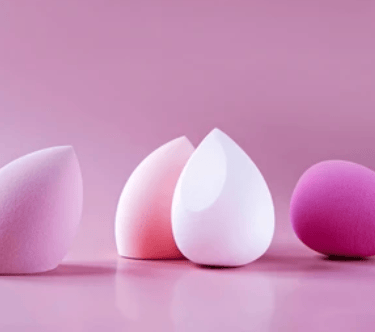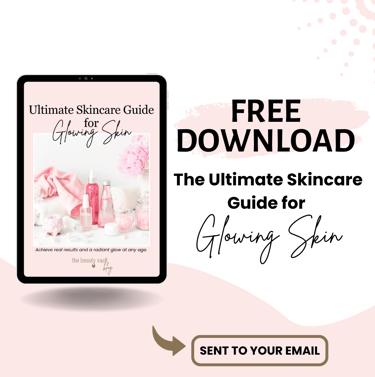Ultimate Skincare Guide for Glowing Skin
Discover everything you need to know about skincare with The Beauty Vault's ultimate guide. Tailored by age, skin type, and lifestyle, achieve real results and glowing skin at any age. Your glow-up starts here!
SKIN
7/24/202521 min read


Skincare Basics — Why It’s More Than Just Products
When most people think of skincare, they picture pretty bottles and 10-step routines. But real skincare goes way deeper than just what’s on your bathroom shelf.
Skincare is your first line of defense — against the sun, pollution, bacteria, and even stress. Your skin is your body’s largest organ, and it works hard to protect you daily. So taking care of it isn’t just about looking good... it’s about feeling good, staying healthy, and aging well.
Think of skincare like brushing your teeth. You don’t do it for fun — you do it because the little things add up. And when you’re consistent? The results show.
A few skincare truths no one talks about:
You don’t need a 20-product routine to have amazing skin.
Expensive doesn’t always mean better.
Drinking more water does help, but it’s not a magic fix.
Consistency will always beat “miracle” products.
And here’s the kicker: what works for someone else might not work for you. The secret? Learning your skin, keeping things simple, and using what actually makes a difference.
Ready to finally make sense of all the noise in the skincare world? Let’s start with the basics: understanding your skin type.
This post may contain affiliate links. We may earn a small commission if you purchase through our links — at no extra cost to you.
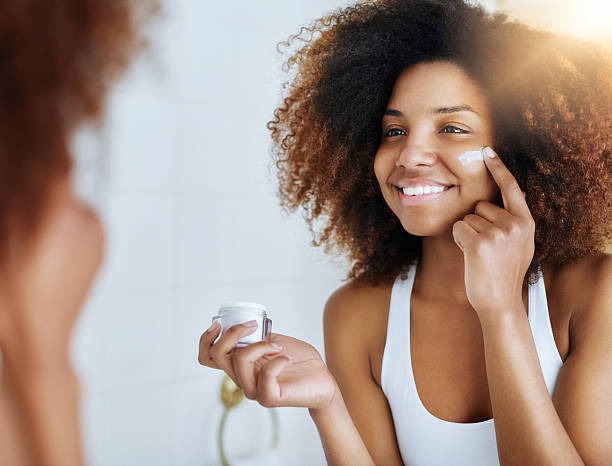

Understand Your Skin Type
When it comes to skincare, one of the biggest mistakes people make is buying products based on trends — not based on their actual skin type.
Think of it like this: you wouldn’t wear a winter coat to the beach, right? Your skin needs the right kind of care for its specific needs. Using products that don’t match your skin type can lead to breakouts, dryness, irritation, or just wasted money. So let’s make sure that doesn’t happen.
The 4 Main Skin Types
Here’s how to figure out where you fall — even if your skin changes with seasons, hormones, or age.
1. Oily Skin
✨ Feels shiny or greasy, especially in the T-zone (forehead, nose, chin)
🍑 Prone to acne, blackheads, and enlarged pores
✅ Loves: lightweight gel moisturizers, salicylic acid, niacinamide, clay masks
If your skin leans oily or acne-prone, we recommend the La Roche-Posay Effaclar Purifying Foaming Gel Cleanser — it’s gentle, fragrance-free, and designed specifically for oily skin without stripping it dry.
For serum support, The Ordinary Niacinamide 10% + Zinc 1% is one of the most budget-friendly and effective ways to control shine and minimize pores over time.
2. Dry Skin
🧽 Feels tight, rough, or flaky, especially after cleansing
💥 Can appear dull or even red and patchy
✅ Loves: creamy cleansers, hyaluronic acid, ceramides, rich moisturizers
For topical support, the CeraVe Hydrating Cleanser is a cult favorite — it’s non-foaming, gentle, and packed with ceramides and hyaluronic acid.
Pair it with the Neutrogena Hydro Boost Gel-Cream (Fragrance-Free) for lightweight, long-lasting hydration that layers beautifully under makeup or SPF.
Author's note: If your skin feels dry no matter how much moisturizer you use, you may need hydration support from the inside out. HYDRATED is a peptide-based supplement with natural electrolytes that helps restore moisture balance at the cellular level — a favorite for anyone dealing with dry, flaky, or tight skin.
3. Combination Skin
🔁 Oily in some areas (usually the T-zone), dry or normal in others
🎯 Requires balancing act — not too heavy, not too drying
✅ Loves: gentle cleansers, balancing toners, lightweight hydration, targeted spot-treatments
For combination skin, we like the La Roche-Posay Toleriane Hydrating Gentle Cleanser — it’s a great in-between that cleanses thoroughly without over-drying.
If you struggle with an oily T-zone but dry cheeks, a product like the Neutrogena Oil-Free Moisture for Combination Skin can help balance both zones.
4. Sensitive Skin
🥵 Reacts easily — stinging, burning, redness, or breakouts from new products
💨 Can overlap with dry, oily, or combo types
✅ Loves: fragrance-free, hypoallergenic, soothing ingredients like aloe, oat, or calendula
For extra-gentle cleansing, the Vanicream Gentle Facial Cleanser is a dermatologist favorite — no fragrance, no dyes, just clean and calming.
And if you need soothing hydration, the Aveeno Calm + Restore Oat Gel Moisturizer is light, calming, and won’t trigger redness or stinging.
Pro Tip:
Your skin type isn’t “bad” — it’s just different. The key is learning to work with it, not against it. And yes, your skin type can change with hormones, seasons, or age — so don’t be afraid to reassess from time to time.
Want to keep this simple?
Here’s a quick way to test your skin type:
Wash your face with a gentle cleanser and pat dry.
Wait 30 minutes — no moisturizer or products.
Observe:
If it feels tight → likely dry
If it’s shiny → oily
If it’s both → combo
If it’s red or irritated → sensitive
Next up, we’ll build a routine tailored to your type — and talk through the 5 daily steps that matter most.
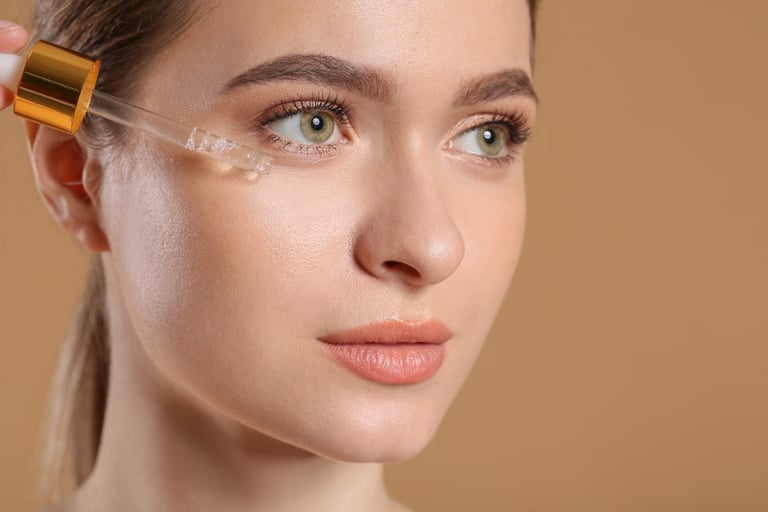

The 5-Step Daily Skincare Routine
Skincare doesn’t have to be overwhelming or expensive — it just needs to be consistent and customized for your skin type.
Below is a simple, effective 5-step routine that works for nearly everyone. These are the essentials. Once you get these steps down, you can layer in extras (like masks or serums) as needed.
Step 1: Cleanser — Start Fresh
Cleansing is the first step to a healthy skincare routine. It removes makeup, oil, sweat, and pollution that builds up during the day (or night). The key? Use the right cleanser for your skin type.
Dry skin: Creamy or hydrating cleansers
Oily skin: Gel or foaming cleansers with salicylic acid
Sensitive skin: Gentle, fragrance-free cleansers
Combo skin: Balancing or low-foaming formulas
Avoid: Harsh soaps or over-cleansing (which strips your skin)
One of the best all-around gentle cleansers is the CeraVe Hydrating Facial Cleanser — great for dry and sensitive skin, and backed by dermatologists.
If you need something foaming for oily skin, the La Roche-Posay Effaclar Gel Cleanser is ideal for deep-cleansing without over-drying.
Step 2: Toner (Optional, But Worth It)
Toner helps remove any leftover residue, balances your skin’s pH, and preps it for the rest of your products. While not essential for everyone, it can be a helpful bonus step — especially if you wear makeup or have oily or acne-prone skin.
Look for toners with:
Witch hazel (for oily/acne-prone skin)
Rose water or glycerin (for dry/sensitive skin)
Niacinamide (for pores + brightening)
Avoid: Alcohol-based toners — they can dry out and irritate the skin
If you’re adding a toner into your routine, the Thayers Alcohol-Free Rose Petal Witch Hazel Toner is a gentle favorite for oily or acne-prone skin — no alcohol, just calming botanicals.
For dry or sensitive skin, try the Klairs Supple Preparation Facial Toner — it’s hydrating, pH-balanced, and non-irritating.
Step 3: Serum — Target Your Skin Concerns
Serums are like little magic potions for your skin. They’re packed with concentrated ingredients to address specific concerns like dark spots, fine lines, dehydration, or dullness.
Choose one based on your needs:
Vitamin C: Brightens, fades dark spots, protects from sun damage
Hyaluronic Acid: Deep hydration + plumps skin
Peptides: Supports collagen + reduces fine lines
Niacinamide: Minimizes pores + calms redness
Retinol (PM only): Boosts cell turnover + smooths skin
Product Pick:
Support your skin’s repair process from within with FIT — a recovery-focused peptide supplement that helps reduce internal inflammation, improve circulation, and promote nutrient delivery for a smoother, more resilient glow.My favorite budget-friendly brightening serum is the TruSkin Vitamin C Serum — it helps even out skin tone and fade dark spots over time.
For hydration and plumping, The Ordinary Hyaluronic Acid 2% + B5 is simple, effective, and layers well with almost anything.
Step 4: Moisturizer — Lock In Hydration
Moisturizer does more than just “moisturize” — it helps seal in your serum, protect your skin barrier, and keep hydration from escaping. Yes, even oily skin needs a moisturizer!
Choose:
Dry skin: Rich creams with ceramides or shea butter
Oily skin: Lightweight, oil-free gel moisturizers
Combo skin: Balancing or dual-zone moisturizers
Sensitive skin: Fragrance-free, calming formulas
Product Picks:
For all skin types, the La Roche-Posay Toleriane Double Repair Moisturizer is a lightweight favorite that hydrates deeply without clogging pores — perfect for daily wear and layering under makeup or SPF.If your skin needs something richer (especially at night or during colder months), try the CeraVe Moisturizing Cream for Dry Skin — thick, fragrance-free, and packed with ceramides and hyaluronic acid to restore moisture and calm irritation.
Oily or combo skin types will love Neutrogena Hydro Boost Gel Cream (Oil-Free) — it’s feather-light and packed with hyaluronic acid.
And for sensitive skin, the Aveeno Calm + Restore Oat Gel Moisturizer is gentle and soothing without fragrance or heavy texture.
Step 5: SPF — Your Skin’s Best Friend
If you only do one thing after cleansing, let it be this: wear SPF daily.
UV damage is the #1 cause of premature aging, dark spots, and skin cancer — even on cloudy days or when indoors near windows.
Look for:
SPF 30 or higher
Broad spectrum (UVA + UVB)
Lightweight, non-comedogenic formulas
Tinted SPF or SPF moisturizers are great time-savers too!
Product Picks:
EltaMD UV Elements Tinted Sunscreen Moisturizer SPF 44
This is one of my daily go-to’s — a lightweight mineral sunscreen that hydrates and protects while giving your skin a natural, even-toned glow. It’s fragrance-free, gentle, and perfect under makeup or on bare skin.Supergoop! Unseen Sunscreen SPF 40
If you want something totally invisible and velvety, this one’s great for all skin tones. It doubles as a primer, so your foundation won’t slide, and it's great for oily or combo skin.
Pro Tip:
Skincare isn’t about perfection — it’s about consistency.
Even just 3 of these 5 steps done daily can dramatically improve your skin over time.
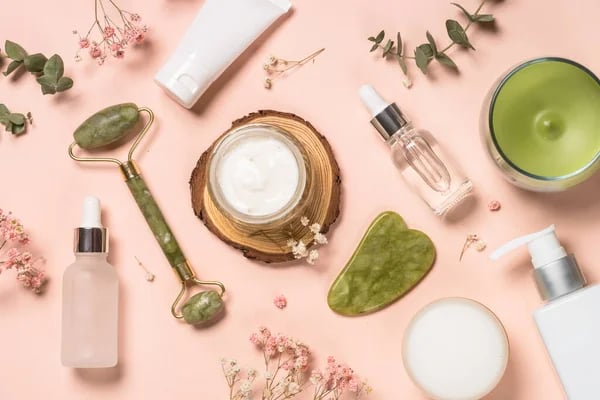

Weekly Add-Ons: Masks, Exfoliators & Targeted Treatments
Once you’ve got your daily routine down, it’s time to level up with weekly (or bi-weekly) treatments. These are the little extras that make your skincare routine feel more luxurious, more personalized — and honestly, more fun.
They’re not must-haves every day, but when used consistently, they can seriously transform your skin over time.
Exfoliation: Out With the Old
Exfoliating removes dead skin cells that can clog pores, dull your glow, and block your products from working properly. But too much of a good thing? Not so good. Over-exfoliating can lead to redness, flaking, or breakouts.
Use: 1–2 times per week, depending on your skin type.
Choose the right exfoliator for your skin:
Chemical exfoliants (AHA/BHA): Great for acne-prone or textured skin
Physical scrubs: Use gentle ones only — avoid anything harsh or gritty
Enzyme exfoliants: Gentle but effective for sensitive skin types
Pro tip: Always follow with moisturizer — your fresh skin needs hydration!
Product recs:
If you're new to chemical exfoliation, Paula’s Choice 2% BHA Liquid Exfoliant is one of the most-loved options for clearing pores and smoothing skin texture. It’s gentle enough for most skin types and especially effective for blackheads and breakouts.
For something even gentler (great for sensitive skin), The Ordinary Lactic Acid 5% + HA gives you mild exfoliation with added hydration — perfect for keeping your glow without the sting.
Face Masks: Your Skin’s Reset Button
Masks are like mini spa moments at home. They target specific concerns and give your skin a visible boost when it needs it most.
Match your mask to your mood (or your skin):
Clay or charcoal masks: Great for oily or congested skin
Hydrating gel masks: Soothing for dry, stressed skin
Sheet masks: Quick hydration and glow before an event
Peptide or collagen masks: Plumping, firming, and great for anti-aging routines
Use 1–3x per week, or when your skin needs a little extra love.
You may have seen this viral sensation sweeping the interwebs: For a weekly at-home facial that delivers that smooth, glass-skin glow, the SUNGBOON EDITOR Deep Collagen Boost Set includes both a collagen serum and a firming mask — all powered by over 2 million ppb of real collagen plus Volufiline (a K-beauty favorite for plumping and elasticity).
Use this 1–2 times a week to visibly smooth, hydrate, and lift dull or tired skin.
Targeted Treatments: Precision Skincare
This is where things get personal. Targeted treatments address specific issues — like breakouts, fine lines, hyperpigmentation, or under-eye circles.
Common targeted treatments include:
Spot treatments (for blemishes)
Dark spot correctors
Under-eye creams
Retinol/retinoids (for anti-aging + texture)
Peptide boosters (yes — peptides again!)
If your skin tends to break out or flare up during high-stress periods, don’t overlook internal triggers like cortisol.
CALM is a daily stress-reducing peptide blend that supports mood, sleep, and hormone balance — all of which directly affect your skin's ability to heal, glow, and stay calm under pressure.
One of my favorite fast-acting solutions for surprise breakouts is the Hero Cosmetics Mighty Patch — it flattens blemishes overnight and keeps you from picking (🙌).
They come in different styles, but I personally love the Invisible+ version for wearing during the day or under makeup. You can even try the Micropoint patches if you're targeting deeper, under-the-skin bumps early.
A Note on Overdoing It
More is not always better.
Using too many actives (like exfoliants, retinol, and strong masks) too often can compromise your skin barrier — leaving you red, irritated, or breaking out.
Keep a simple calendar:
Exfoliate 1–2x/week
Mask 1–3x/week
Targeted treatments as needed (and not all at once)
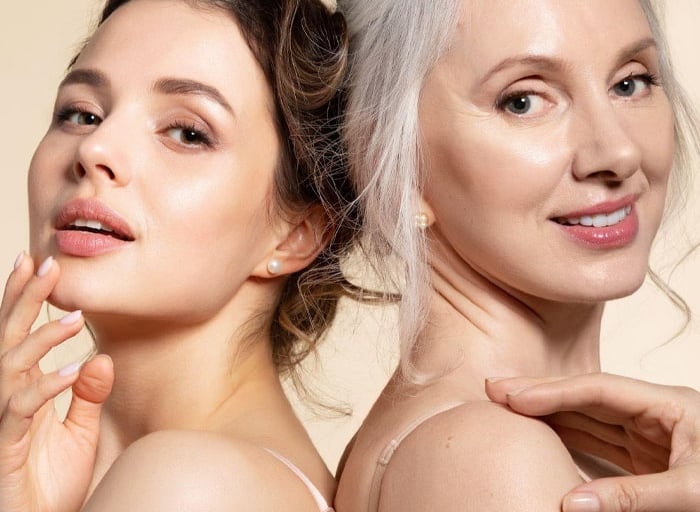

Skincare by Age or Stage
Your skin evolves as you do — and so should your routine. Hormones, stress, pregnancy, aging, and lifestyle all play a role in how your skin looks and feels. What worked in your 20s may not cut it in your 40s, and that’s totally normal.
This section breaks down how to adjust your skincare routine based on your current season of life — so you’re not guessing what your skin actually needs.
Teens & Early 20s: Oil, Acne & Prevention
At this age, skin is typically more resilient — but prone to breakouts, oiliness, and the occasional hormonal meltdown (thanks, puberty and stress).
Key goals:
Keep pores clean
Reduce inflammation
Build consistent, healthy habits
Must-haves:
Gentle cleanser
Oil-free moisturizer
Salicylic acid or niacinamide for breakouts
Daily SPF (yes, even for teens!)
Avoid: Harsh scrubs, over-washing, and skipping moisturizer (yes, oily skin still needs it!)
Products:
If you’re just starting out, the CeraVe Foaming Facial Cleanser for Normal to Oily Skin is a fantastic gentle cleanser to keep oil and breakouts in check without over-drying.
For spot treatment, I recommend the Hero Mighty Patch — it’s mess-free, fast-acting, and seriously addictive once you try it.
And if you’re skipping SPF (don’t!), the Supergoop! Unseen Sunscreen SPF 40 is invisible and easy to love.
Late 20s to Mid 30s: Early Aging & Glow Maintenance
This is when you might notice dullness, fine lines, and less bounce in your skin. Your collagen production starts to slow, and lifestyle (late nights, stress, sun) begins to show.
Key goals:
Protect collagen
Brighten dullness
Start light anti-aging steps
Must-haves:
Vitamin C serum (AM)
Peptides or retinol (PM)
Hydrating moisturizer
Eye cream
SPF (always)
Pro tip: This is the perfect stage to build your peptide routine — it’s early enough to preserve your skin’s youth, but late enough to start seeing small signs you can actually reverse.
Products:
To support collagen and glow in your late 20s and early 30s, I love TruSkin Vitamin C Serum in the morning and a gentle retinol like CeraVe Resurfacing Retinol Serum at night. It’s formulated with niacinamide and licorice root to help fade dark spots, smooth texture, and brighten dull skin without irritation.
For internal skin support, I personally use the peptide bundle, Muscle + Metabolic Collection — especially FIT and Hydrated — to reduce inflammation, improve circulation, and support plump, healthy skin from the inside out.
40s & 50s: Support, Strengthen & Replenish
Here’s where skin begins to thin, lose elasticity, and become drier — especially during and after perimenopause. You may notice more uneven tone, texture, or deeper wrinkles.
Key goals:
Stimulate collagen production
Rebuild skin barrier
Add rich hydration
Must-haves:
Peptides + ceramides
Retinol or bakuchiol
Rich moisturizers + overnight masks
Eye + neck cream
Daily SPF (physical or mineral if skin is more sensitive now)
It’s not about reversing the clock — it’s about strengthening what you’ve got and maintaining your glow.
Products:
Skin at this stage loves hydration and support. The Olay Regenerist Micro-Sculpting Cream is a top pick with peptides + niacinamide, and The Ordinary Multi-Peptide + Copper Peptides adds deeper firming and repair over time.
For a weekly collagen boost, the SUNGBOON EDITOR Deep Collagen Boost Set delivers visible plumpness and hydration.
We also recommend CALM, a relaxation and mood support supplement, to help reduce cortisol spikes that can show up on your skin as dryness, dullness, or breakouts — especially during hormonal shifts or stress.
Pregnancy, Postpartum & Hormonal Shifts
Whether you’re navigating pregnancy, postpartum, or hormonal changes like perimenopause, your skin can feel like it's on a rollercoaster.
Common issues:
Dryness or oiliness
Hormonal acne (chin/jawline)
Hyperpigmentation (like melasma)
Gentle is the key.
Not all skincare ingredients are pregnancy-safe, so check labels carefully.
✅ Safer options:
Vitamin C
Hyaluronic acid
Azelaic acid
Niacinamide
Mineral SPF
🚫 Avoid while pregnant/breastfeeding:
Retinol
High-dose salicylic acid
Chemical sunscreens with oxybenzone
Author's Note: After having kids, I found my skin went from combo-oily to dry and reactive. Adding peptides and switching to gentler hydration made all the difference.
Products:
For glow and hydration during pregnancy or breastfeeding, I recommend the The Ordinary Hyaluronic Acid 2% + B5 — it’s simple, safe, and super effective.
The Thayers Alcohol-Free Rose Petal Witch Hazel Toner is a gentle way to refresh your skin without irritation.
And don’t forget inner care: HYDRATED, a clean, sugar-free, dye-free electrolyte powder, can be a game-changer for new moms dealing with fatigue and dry skin from stress, sleep deprivation, or hormonal shifts.
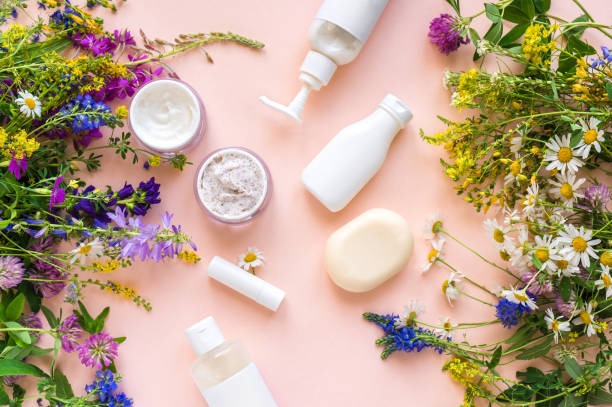

Ingredient Guide: What Works & What Doesn’t
Skincare isn’t just about the brand name — it’s about the ingredients inside. The beauty industry throws around buzzwords, but understanding what’s actually in your products helps you choose smarter, waste less, and see real results.
This guide breaks down the hero ingredients to look for, the ones to avoid, and how to read a label like a pro — no chemistry degree required.
Power Ingredients That Actually Work
These are the tried-and-true ingredients backed by science (and skin lovers everywhere). Add them to your routine based on your skin needs — you don’t need them all at once.
Top skincare ingredients worth knowing:
Vitamin C – Brightens skin, evens tone, boosts collagen
→ Best used in the morning under SPF
→ Look for L-ascorbic acid for the strongest formHyaluronic Acid – Deep hydration, plumps fine lines
→ Apply to damp skin, then seal with moisturizerNiacinamide – Calms redness, smooths texture, shrinks pores
→ Very gentle and safe for all skin typesPeptides – Stimulate collagen, firm skin, repair barrier
→ Great for aging, dry, or sensitive skin (author favorite!)Author’s Note: I’ve seen the most noticeable skin texture improvements from combining topical peptides with internal ones. HYDRATED (for moisture support) and FIT (for cellular recovery and performance) are two of my go-to supplements to complement any peptide-rich skincare routine. These two products come bundled — along with LEAN, which supports fat loss and appetite control — in the Muscle + Metabolic Collection, which I personally take daily.
Retinol / Retinoids – Boosts cell turnover, smooths wrinkles and acne
→ Use at night, start slow (1–2x/week)Salicylic Acid (BHA) – Unclogs pores, treats blackheads + breakouts
→ Best for oily or acne-prone skinGlycolic Acid (AHA) – Exfoliates dull skin, fades dark spots
→ Use once or twice a weekCeramides – Strengthen the skin barrier and lock in moisture
→ Essential for dry or irritated skin
Pro tip: Layer lightweight (water-based) ingredients first, then thicker creams or oils. And always patch test something new!
What to Avoid (or Use Cautiously)
Not everything on the shelf deserves a spot on your face — even if it's trending.
Common irritants or red flags:
Fragrance – Can trigger irritation or breakouts, especially in sensitive skin
Essential oils – These can be amazing for skin and overall wellness when properly diluted and used for the right skin type. However, some (like citrus oils) may increase sun sensitivity, and overuse can cause irritation. Always patch test first.
Denatured alcohols – Often drying and damaging to the skin barrier
Physical scrubs with sharp particles (like apricot shells or walnut shells) – These can create microtears in your skin
Look at ingredient lists: the first 5–10 ingredients make up the bulk of the product.
How to Read a Skincare Label Like a Pro
Skincare labels don’t have to be scary. Here's what to look for:
Quick label reading checklist:
✅ Active ingredients listed first? That means they’re present in useful amounts
✅ Clear % amounts? (like 2% salicylic acid or 10% niacinamide) = transparency
✅ Simple formulas? Fewer fillers often means fewer irritants
If a product shouts about “vitamin C” on the label but it’s listed near the bottom of the ingredient list — it’s likely not strong enough to matter.

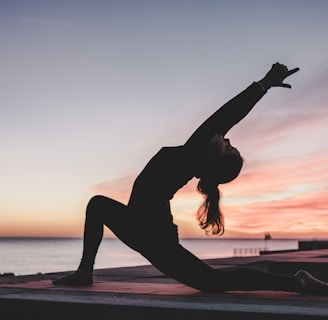
Lifestyle Tips That Impact Your Skin
Skincare isn’t just topical — your daily habits, stress levels, sleep, diet, and overall health all play a huge role in how your skin looks and feels. You can use the best products in the world, but if your lifestyle is working against you, your skin will tell on you.
Here are some everyday factors that influence your glow — and how to upgrade them without overhauling your entire life.
Hydration: The Glow From Within
Water is not a magical cure-all, but dehydration definitely shows up in the skin: dullness, dryness, and a lack of plumpness are often tied to it.
Skin-friendly hydration tips:
Aim for at least 8–10 cups of water daily
Add electrolytes if you’re working out, sweating a lot, or feeling sluggish
Eat water-rich foods like cucumber, berries, and watermelon
Pro tip: If you’re using hyaluronic acid topically, it works best when you’re actually hydrated from the inside out.
Products:
Internal hydration matters. I take HYDRATED daily for skin plumpness, cellular moisture, and electrolyte balance.
Nutrition: Feed Your Skin Cells
Your skin is the last organ to receive nutrients — so what you eat matters. Skin-loving vitamins and minerals help with glow, repair, and inflammation.
Skin-supportive nutrients to focus on:
Vitamin C: Collagen production + brightening
Vitamin A: Cell turnover + smooth texture (think retinol, but internal!)
Omega-3s: Calm inflammation, prevent dryness
Zinc: Helps heal breakouts + hormonal acne
Biotin & B vitamins: Support hair, skin, and nail strength
Quick Tip: When choosing B vitamins, look for methylated forms like methyl B12 or methylfolate. These are more bioavailable and easier for your body to absorb — especially if you have the common MTHFR gene variant that affects how B vitamins are processed.
Author’s Note: I started seeing real skin changes when I added daily peptides, collagen powder, and a high-quality ADK 10 supplement. (Vitamin D was a game changer for my skin, mood, and hormones.)
Foods rich in antioxidants, omega-3s, and healthy fats give your skin the building blocks it needs to stay elastic, bright, and youthful.
Supplements we use and recommend:
Collagen peptide powder — add it to smoothies or coffee
Vitamins A, D3, K2 — take this for immune + skin health (I personally love the Biote brand)
Methyl B12 — helps energy, mood, and skin tone (I take a methylated b complex supplement to ensure all of my b vitamins (b12, folate, niacin, etc) are in a bioavailable form.)
Sleep: Your Overnight Skincare Reset
Beauty sleep is real. While you sleep, your skin goes into repair mode — producing collagen, balancing oil, and shedding damaged cells.
Aim for:
7–9 hours of restful sleep
A consistent sleep/wake schedule
No screen time 30–60 minutes before bed (blue light affects skin too!)
Bonus tip: Use a silk pillowcase to reduce friction, irritation, and sleep wrinkles.
Your skin repairs and regenerates while you sleep. Chronic lack of sleep can lead to dehydration, dark circles, puffiness, and increased signs of aging.
Products:
Again, CALM deserves another shoutout here — it helps me fall asleep faster and stay asleep longer.
Try a sleep mask or blackout curtains to improve sleep quality.
Stress: The Skin-Sabotaging Culprit
Stress can increase cortisol levels, which inflames the skin, triggers breakouts, and weakens the skin barrier. It can also worsen existing conditions like eczema, psoriasis, or rosacea.
Build small stress-busters into your day:
Breathwork or meditation (even 2 minutes!)
Low-impact movement (walks, stretching, rebounding)
Herbal teas or adaptogens (like ashwagandha or magnesium)
Pro tip: Skincare is self-care. Make your routine feel like a ritual, not a chore.
Stress isn’t just in your head — it shows up on your face, too. Breakouts, dullness, dry patches, and premature lines can all flare up when cortisol is high.
Products:
CALM — I take this blend of ashwagandha, adaptogens, and calming peptides daily. It helps ease my mind and improves how my skin reacts to stress.
I also love adding Magnesium Glycinate to my nightly wind-down routine — it helps calm the nervous system, ease muscle tension, and support deeper, more restorative sleep.
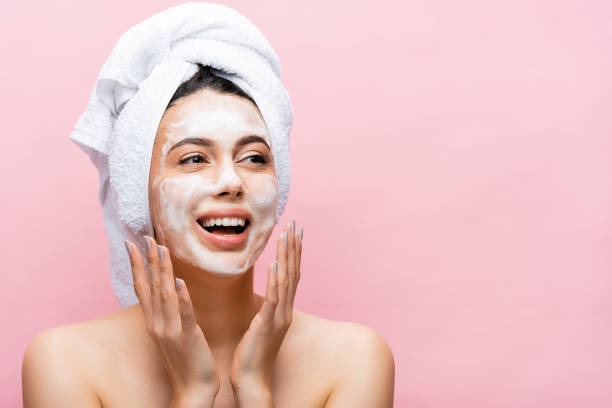

Common Skin Problems — And How to Fix Them
No one has perfect skin 100% of the time. Whether it’s the occasional breakout or something more stubborn, most of us deal with something at some point. The key is knowing what you're dealing with — and using the right tools to treat it.
Below are some of the most common skin issues and how to approach them. This isn’t medical advice, but it’s a great place to start.
Acne & Breakouts
Breakouts aren’t just a teenage thing. Hormones, stress, diet, and product buildup can all clog pores and trigger acne — even in your 30s, 40s, or beyond.
Try this:
Gentle cleanser with salicylic acid or tea tree
Niacinamide to reduce redness and oil
Spot treatments (with benzoyl peroxide or sulfur)
Keep your pillowcases and makeup brushes clean
Avoid: Over-scrubbing, drying alcohols, or layering too many actives at once
Product recs:
CeraVe Acne Foaming Cream Cleanser (with benzoyl peroxide)
COSRX Acne Pimple Patches — thin, clear, and great for overnight spot healing
or try Mighty Patch Invisible+
The Ordinary Niacinamide 10% + Zinc — helps reduce oil and fade post-acne marks
Dullness & Uneven Tone
If your skin looks tired or lacks glow, dead skin cells and dehydration might be to blame. Uneven tone can come from old breakouts, sun exposure, or just sluggish cell turnover. The fix? A combo of gentle exfoliation, brightening ingredients, and internal nourishment.
Try this:
Exfoliate 1–2x a week (AHA like glycolic acid or enzyme-based)
Add a vitamin C serum in the morning
Drink more water + focus on sleep
Pro tip: Peptide serums + collagen supplements can help bring back that bouncy, dewy look over time.
Product recs:
The Ordinary Glycolic Acid 7% Toning Solution — chemical exfoliant to bring fresh skin to the surface
TruSkin Vitamin C Complex Serum — brightens and evens skin tone without irritation
COSRX Snail Mucin 96 Essence — hydrates and improves radiance
Hyperpigmentation & Dark Spots
Sun damage, post-acne marks, and hormonal melasma all fall under this category. The goal here is to gently fade spots without irritating your skin. Dark spots from sun exposure, acne scars, or hormones can take time to fade — but the right ingredients can speed up the process.
Try this:
Vitamin C or niacinamide serum (brightening)
Azelaic acid or licorice root extract
Gentle exfoliation (but not daily!)
Always wear SPF — or those spots will come right back
Product recs:
TruSkin Vitamin C Serum - AM routine
CeraVe Resurfacing Retinol Serum - PM routine
The Ordinary Alpha Arbutin 2% + HA — great for all-over brightening
Fine Lines & Loss of Firmness
Texture changes and fine lines are normal with age — but peptides, exfoliants, and retinoids can help soften and smooth. Aging skin = less collagen, more texture, and softer elasticity. It’s natural, but you can support your skin through it.
Try this:
Peptides (topical + internal)
Retinol or bakuchiol at night
Hydrating overnight masks
Daily SPF to prevent deeper damage
Author’s Note: I personally saw a difference in my under-eyes and smile lines when I added peptides consistently — inside and out.
Product recs:
COSRX Snail Mucin Essence — crazy popular for a reason
The Ordinary Lactic Acid 5% + HA — gentle chemical exfoliation
FIT Peptide Supplement — I’ve noticed smoother skin and faster recovery from inflammation
Collagen peptides — support skin elasticity over time
Redness, Sensitivity, or Irritation
Reactive skin can be triggered by harsh products, over-exfoliating, stress, or conditions like rosacea or eczema. Reactive, red skin often means your barrier is damaged. Look for barrier-repairing ingredients like ceramides, niacinamide, and probiotics.
Try this:
Fragrance-free, gentle skincare (think oat, aloe, or ceramide-based)
Niacinamide to calm redness
Mineral sunscreen (zinc or titanium-based)
Eliminate potential irritants and simplify your routine
Reminder: Less is more when your skin is mad at you.
Product recs:
Avene Thermal Spring Water Mist — cooling and calming for hot or flushed skin
Paula’s Choice Calm Redness Relief Cleanser — extra gentle and fragrance-free
Tip: Avoid over-exfoliating and opt for lukewarm water instead of hot.


Wrap-Up & Next Steps
If you’ve made it this far — first of all, your skin already loves you. 💖
Skincare doesn’t have to be complicated or expensive. What matters most is building a routine that works for you — your skin type, your lifestyle, your stage of life. It’s about being intentional, consistent, and a little bit patient.
Whether you're just starting your skincare journey or fine-tuning your current routine, the steps in this guide are designed to help you glow confidently, without the guesswork.
Here’s What You Can Do Next:
1. Start simple: pick 3–5 daily steps to follow
→ Cleanser, serum, moisturizer, SPF = a solid foundation
2. Learn your skin type: then shop smart
→ We’ll link product recommendations by skin type + concern below
3. Upgrade your glow from within
→ Focus on hydration, nutrition, sleep, and supplement support
4. Bookmark this guide or pin it on Pinterest
→ You’ll want to come back as your routine evolves
5. Subscribe to The Beauty Vault newsletter
→ Get skincare tips, product reviews, and exclusive favorites delivered to your inbox
Author’s Note: Skincare isn’t vanity — it’s self-respect. When you care for your skin, you’re not just building a beauty routine. You’re building a moment in your day that says, “I’m worth it.”
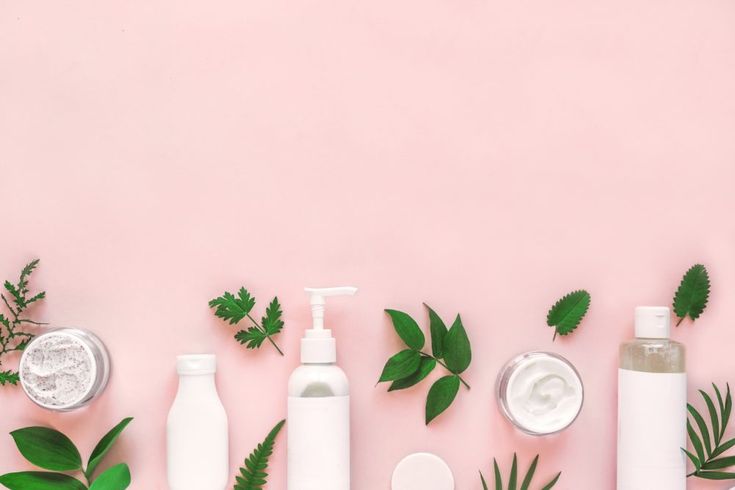

Skincare Product Roundup
Ready to shop smarter? Here's a roundup of everything mentioned in this guide — grouped by category for easy scrolling and clicking. These are products we've personally used, trust, or carefully selected to support glowing skin from the inside out.
Understand Your Skin Type
Oily Skin
Dry Skin
Combination Skin
Sensitive Skin
Skincare by Age or Stage
Teens & Early 20s
Late 20s to Mid 30s
40s & 50s
Pregnancy, Postpartum & Hormonal Shifts
Lifestyle Tips That Impact Your Skin
Hydration
Nutrition
Methyl B12 (B Complex)
Sleep
CALM, stress, mood, and sleep support
Stress
CALM, stress, mood, and sleep support
Common Skin Problems
Acne & Breakouts
CeraVe Acne Foaming Cream Cleanser (with benzoyl peroxide)
Dullness & Uneven Tone
Hyperpigmentation & Dark Spots
TruSkin Vitamin C Serum - AM routine
CeraVe Resurfacing Retinol Serum - PM routine
Fine Lines & Loss of Firmness
Redness, Sensitivity, or Irritation
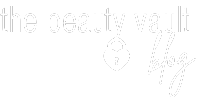

© 2025 The Beauty Vault. All Rights Reserved.
Luxury. Beauty. Unlocked.
This website may include affiliate links to various companies. When you make a purchase through these links, we may receive a small commission, at no additional cost to you.
Medical Disclaimer:
The information provided on this website is for educational purposes only and is not intended to diagnose, treat, cure, or prevent any disease. Always consult with a qualified healthcare professional before starting any new supplement, diet, or wellness program.







